The dramatic rise in cell phone usage globally, including among younger, school-aged users, brings into focus the debate on why phones should be allowed in school.
Cell phones are a forbidden item in most classrooms. Many schools have policies against students taking their gadgets out of their backpacks during the day or even bringing them to school at all.

However, I think that cell phones can play a very beneficial role in a classroom, especially when used effectively. I’ve stretched the ‘rules’ in the past and let my students pull out their phones for various classroom lessons and activities, and I’m definitely glad I did!
Some also believe that allowing students to use phones in school teaches them responsible usage for later in life:
If we don’t let kids use cell phones in the classroom, how will they ever learn to use them responsibly in a workplace? Every adult I know uses their phone all day every day. Let’s prepare kids for the real world.
— Matthew B. Courtney, Ed.D. (@mbcourtneyedd) August 7, 2022
In addition to keeping my students more engaged in learning, using the gadgets offered a whole host of other benefits, many of which I didn’t even think of until I saw them! I’d love to share my answers to the question “why should students be allowed to use cell phones in class” with you.
In this article, I’ll share:
- Cell Phones in School — Teachers’ Thoughts
- Why Should Phones be Allowed in School
- 7 Ideas How Cell Phones Can Be Used Effectively in the Classroom
- Digital Etiquette for Students in the Classroom
You can watch this video below. It contains a brief retelling of the article.
Cell Phones in School — Teachers’ Thoughts
Many teachers and parents are on the fence about whether to let students have cell phones in school. More and more teachers are beginning to see the potential learning benefits mobile phones can offer to their students and are advocating for gadget use in the classroom. In this video, Sam from New EdTech Classroom Why we should allow students to use cell phones in schools.
Below are what some teachers have shared about using mobile phones in the classroom:
”We need to embrace these changes and instead of trying to separate that reality from an outdated vision of a classroom, we need to find a way to optimize the educational experience for the connected kids of the future. We can’t disconnect them from the world between the hours of 8am – 3pm everyday. Don’t be scared. You have to leave your comfort zone and take a risk. The same thing you ask your students to do. Take a risk and see what the future may look like and then change your teaching to ensure that the technology is used as a tool and not just a distraction.”
“I’ve also seen the value that cell phones can bring to education. Students who might not have access to computers at home can type and submit essays on their phones. Students can quickly look up some information and verify its validity. Furthermore, students can also use their cell phones to collaborate with their peers.”
“When students have access to technology and social media, they have access to empowerment and leadership online. As educators, we need to empower our students to use technology for good. When students are given the chance to use their cellphones in class as a learning tool, we can teach them how to positively influence and impact other people online.”
“When students have access to technology and social media, they have access to empowerment and leadership online. As educators, we need to empower our students to use technology for good. When students are given the chance to use their cellphones in class as a learning tool, we can teach them how to positively influence and impact other people online.”
Why Should Phones be Allowed in School — 11 Reasons
There is a lot of debate about whether phones should be allowed in schools. While there are some cons to letting your students use cell phones in class, I feel that the benefits of using gadgets can outweigh these cons. As long as you have solid classroom management and set clear expectations for students using their mobile phones, I think you’ll find that there are many benefits to letting your students use them.

Setting up a phone charging station, just as you may set up a tablet or Chromebook charging station in your classroom, can ensure your students’ gadgets are charged and ready when needed during instruction.
Many people wonder, “why should students be allowed to use cell phones in class?” In my opinion, some of the biggest benefits of allowing students to use their phones in school include:
1. Providing an Additional Tool for Learning

In today’s digital age, the ubiquity of mobile phones, especially among younger individuals, is undeniable. Most children receive their first phone around the age of 11-12, making these devices a prevalent part of their daily lives even before they hit their teenage years. The integration of these phones in the classroom, thus, presents a unique opportunity for enhancing the learning experience.
When students have the freedom to use their mobile phones during lessons, they instantly gain a portal to a world of technology right at their fingertips. This is invaluable, particularly in educational settings where there might be a shortage of tablets or computers. Instead of waiting for their turn on limited school devices, students can directly tap into the vast reservoir of information available online via their phones. Here are some of the benefits:
- Powerful Research Tools: Mobile phones can be transformative tools for research. If a student encounters a concept they’re unfamiliar with or if a topic sparks their curiosity, they can swiftly dive into a deeper exploration online.
- Interactive Learning: Educators can capitalize on interactive elements by using phones for classroom polls, ensuring active engagement and participation from all students. It becomes an immediate feedback mechanism, gauging understanding and promoting discussions.
- Note-Taking and Collaboration: With the myriad of note-taking and word-processing apps available, students can seamlessly jot down their thoughts, answers, or even craft detailed essays. This not only promotes paperless classrooms but also allows for easy sharing and collaboration among peers.
In essence, by harnessing the potential of mobile phones, educators can cultivate dynamic, interactive, and resource-rich environments that cater to the needs of the modern student.
2. Safety

In the context of safety and the unpredictable nature of emergencies, the presence of cell phones with students becomes of paramount importance. Particularly, in the gravest and unfortunately increasingly prevalent scenarios like school shootings, a mobile phone can serve as a lifeline. During such incidents, when every second is crucial, students can use their phones to alert authorities, inform their parents about their safety, or even receive vital instructions from law enforcement.
Phones are already banned. The parents are worried about these bans because of the very high chance there is a school shooting and their child is unable to call for help. https://t.co/TxpJfrUgJn
— Anosognosiogenesis (@pookleblinky) June 6, 2023
Schools, as places of learning, also bear the responsibility of ensuring the well-being of their students. Cell phones can be crucial in the subsequent scenarios:
- Unpredictable Events: In the unfortunate event of an unforeseen incident or crisis at school, having immediate access to a cell phone can make a significant difference. One of the primary advantages is the ability to swiftly contact parents or guardians. Whether it’s to inform them about an unexpected situation or to seek urgent assistance, being able to communicate directly can offer both the student and parent a measure of relief in stressful situations.
- Commuting Students: For students who commute alone or those who remain on school premises for extracurricular activities, a mobile phone serves as an essential tool to stay connected.
- Medical Emergencies: In situations where there might be a need for medical attention or other emergency services, the quick dialing capability of a phone can be life-saving. Without it, students may find themselves isolated and without the immediate resources to seek help.
While detractors may argue against the distractions phones might pose academically, the security and peace of mind they offer, especially in dire situations, make a compelling case for their presence in the school environment.
3. Improved Communication
In our rapidly evolving digital age, the line of communication between students and their educators is becoming increasingly streamlined thanks to the ubiquitous use of cell phones. Apart from maintaining connections with family and friends, students are harnessing the power of these devices to facilitate a more direct and immediate line of dialogue with their teachers. This virtual bridge enables students to:
- Promptly relay their feedback to the teachers
- Pose queries for immediate resolution
- Engage in constructive discussions, irrespective of the confines of school hours
Even when teachers find themselves swamped during the day, mobile communication ensures that students aren’t left hanging. Queries sent after school hours can be addressed at the teacher’s earliest convenience, eliminating the conventional wait time that could span till the next school day. The immediacy of this system enhances the overall learning experience.
Interestingly, a study from the School of Business highlighted another crucial dimension to this trend. Beyond the teacher-student dynamic, students are proactively forming educational bonds with their peers through their phones. They often initiate and manage class-based groups on various social platforms, allowing for an organized exchange of study materials and collaborative learning, devoid of any official oversight. Such initiatives underscore the instrumental role cell phones play in modern education, fostering a holistic and communal approach to learning.
4. Organization

In today’s digitally-driven world, cell phones have evolved beyond mere communication devices. They now function as personal assistants, packed with tools designed to enhance productivity and organization. For students, these devices can play a pivotal role in shaping their academic journey, thanks to an array of built-in features such as calendar apps, clocks, alarms, and reminders.
Here are the key features that can be beneficial for students:
- Calendar App: It can be an invaluable tool for students to plot out their academic calendar, inputting assignment due dates, exam schedules, and even extracurricular commitments. With reminders set up, students receive timely prompts, ensuring that no task is forgotten or left to the last minute.
- Alarms: They can be utilized not just to wake up for school but also to ensure punctuality for classes or study group meetings.
- Clock: This feature can assist in time management, allowing students to allocate specific blocks of time for focused study, breaks, or recreational activities.
By planning and visualizing their day or week, students can achieve a balance between academic and personal commitments. This underlines why phones should be allowed in school, as cell phones, often perceived as distractions, can actually be powerful organizational tools. When used wisely, they can significantly enhance a student’s ability to manage time, keep up with responsibilities, and maintain a balanced academic life.
5. Can Save Schools Money
The digital revolution has fundamentally transformed the education sector, offering avenues for cost-saving and enhanced accessibility.
Here’s how schools can leverage cell phones for economical and sustainable education:
- E-books and Online Materials: A significant advantage is the rise of e-books and online course materials. By allowing students to access these digital resources via their cell phones, schools stand to benefit economically and environmentally. When students use their phones to tap into a plethora of e-books and other online resources, it significantly reduces the need for schools to invest in physical textbooks, which can be expensive to purchase, update, and maintain. This shift to digital not only alleviates financial pressures but also ensures that students have the most up-to-date information right at their fingertips.
- Digital Document Sharing: Moreover, the digital sharing of documents by teachers further complements this eco-friendly and economical approach. Instead of relying on traditional methods of printing and copying, which come with associated costs and environmental concerns, educators can instantly distribute study materials, assignments, and other critical documents. This streamlined method reduces paper waste, aids in quicker dissemination of information, and fosters a more efficient classroom environment.
In conclusion, embracing the capabilities of cell phones in the academic realm presents a win-win scenario. It offers students the convenience and immediacy of digital access while allowing educational institutions to optimize resources, reduce costs, and promote sustainability.
6. Good for the Environment

The push towards a more sustainable and environmentally conscious approach in education is becoming increasingly important, and digital transformation plays a pivotal role in this shift. By reducing the reliance on print resources and leveraging digital platforms, educational institutions are not only achieving significant financial savings but also contributing positively to environmental conservation.
Using gadgets in classrooms leads to:
- Saving Paper: It’s worth noting that a typical school consumes approximately 75 trees per year, further exacerbating the issues of deforestation. Every sheet of paper spared from printing translates to saved trees, which play an indispensable role in absorbing carbon dioxide, regulating global temperatures, and fostering biodiversity. By reducing the demand for paper, schools indirectly promote forest conservation and reduce their carbon footprint.
- Reducing Ink and Energy Consumption: The cascading benefits extend beyond just paper conservation. Lesser printing implies reduced consumption of ink, which in turn means fewer plastic cartridges that often end up in landfills. The energy used by printers and copiers, though seemingly minor on a day-to-day basis, accumulates over time, leading to substantial power consumption. By cutting down on these activities, institutions also reduce their energy footprint and the associated greenhouse gas emissions.
In essence, embracing digital alternatives in education is not merely a cost-saving strategy; it’s a declaration of commitment to the planet. Schools and educators, by opting for this approach, are not only preparing students for a digital future but also instilling in them the values of sustainability and responsible consumption.
7. Prepares Students for the Future
As educators, our primary responsibility extends beyond just imparting knowledge; it involves equipping students with skills and tools that will remain relevant in their future endeavors.
Undeniably, in the rapidly evolving landscape of the 21st century, technology stands as a colossal pillar shaping numerous sectors. In such a milieu, it becomes imperative for students to not only be familiar with but also proficient in utilizing technological tools, including mobile phones. Here’s what students can acquire that will be advantageous for their future:
- Using Phones as Research Tools: Mobile phones, often perceived merely as communication tools, have metamorphosed into multifunctional devices capable of tasks ranging from basic research to complex problem-solving. By incorporating them into the classroom environment, we offer students a hands-on approach to understand and harness the vast potential these devices possess.
- Enhancing Education through App-Based Learning: Moreover, phones serve as a practical tool to teach students how to study using technology, introducing them to a plethora of educational apps and online resources that can enhance their learning experiences.
- Preparing for a Future Profession: Furthermore, as many future careers will demand technological adeptness, proficiency in using smartphones and other tech tools can be a significant advantage for students entering the workforce. They will inevitably encounter scenarios where quick thinking, complemented by technological skills, will be invaluable.
In conclusion, embracing mobile phones in educational settings is more than just keeping pace with the times; it’s a forward-looking strategy. By doing so, we not only enhance the current learning experience but also lay a robust foundation for our students, ensuring they are well-prepared and competitive in their future careers.
8. Can Create Digitally Responsible Citizens

In an age dominated by digital communication, it’s crucial to instill not only tech proficiency but also digital etiquette among students. Schools, as primary centers of learning and social interaction, have an essential role in shaping this aspect of students’ digital journey. By permitting gadget use within school premises, we lay the groundwork for creating digitally responsible citizens.
Understanding the nuances of when and where to use a phone is paramount. Here’s how educational institutions can guide students towards responsible digital citizenship:
- Learning Digital Etiquette: In a professional setting or during crucial personal interactions, the inappropriate use of a mobile device can be perceived as disrespectful or inattentive. For instance, looking up and maintaining eye contact when someone addresses you demonstrates respect and active engagement, an essential soft skill in both professional and personal realms.
- Providing Environment for Practice: The school environment offers a controlled and supervised platform where students can practice these etiquettes. They can learn to strike a balance between staying digitally connected and being physically present, discerning when to put away their devices and engage with their surroundings.
Without these lessons, students may inadvertently cultivate habits that may hinder their interpersonal relationships in the future. Thus, integrating digital etiquette into the curriculum doesn’t just foster tech-savvy individuals; it molds well-rounded, respectful citizens adept at navigating the digital and real-world landscapes.
9. Can Help Students When Studying
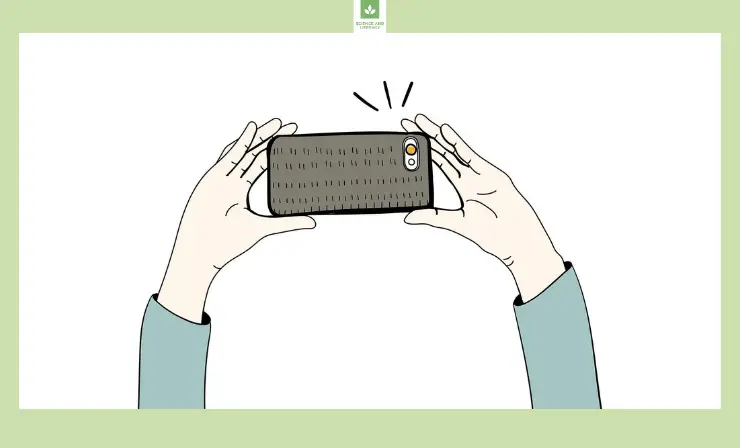
In today’s digital age, the traditional means of note-taking have undergone a transformative evolution, with smartphones emerging as invaluable tools in this process. The built-in camera on mobile phones offers students an efficient and immediate way to capture essential educational content, augmenting their learning experience. Here’s how this can be helpful:
- Capturing Visuals Efficiently: During lectures or instructional sessions, there are often intricate diagrams, charts, or images that may be time-consuming or challenging to replicate by hand in notebooks. Here, the mobile camera serves as a boon. With a quick snap, students can capture these visuals in high resolution, ensuring they don’t miss out on any crucial details. This method not only saves time but also guarantees the accuracy of the information they’re recording.
“In my classes, I let students take pictures of the digital whiteboard, too. If an assignment description or important PowerPoint slide has been up long enough and I am ready to move on, before doing so, I invite kids to snap a picture. This allows them to refer back to the slide at home if necessary.”
- Reviewing and Studying: When it’s time to review the material, be it for a quiz, exam, or class discussion, these photographic notes can be invaluable. Students can easily revisit these images, zooming in on specific details or annotating them with additional insights. This visual approach to studying aids in better retention of information and can make abstract or complex concepts more tangible and understandable.
In essence, the integration of mobile cameras into the educational process amplifies the efficiency of learning. By merging traditional note-taking with digital resources, students are equipped with a richer, more comprehensive set of study materials, paving the way for enhanced academic performance.
10. Accessibility and Personalized Learning
The rise of technology in the educational sector has ushered in a new era marked by accessibility and personalized learning, with cell phones being central to this revolution. The push to incorporate mobile phones in the classroom stems from the profound potential they hold in creating more inclusive and tailored educational experiences, for example:
- Equal Opportunities: Accessibility is about ensuring that every student, regardless of their background, abilities, or challenges, has equal access to learning resources. Cell phones bridge this gap efficiently. For students with learning differences or physical disabilities, smartphones equipped with assistive technologies can be life-changing. Features like screen readers, voice-to-text capabilities, and adjustable text sizes ensure that content is accessible to all.
- Personalization: Beyond accessibility, mobile phones enable personalized learning. With a myriad of educational apps and platforms available, students can pace their learning according to their individual needs. Whether it’s diving deeper into topics of interest or taking additional time to grasp challenging concepts, smartphones allow for this flexibility. Teachers can also benefit, using these tools to offer differentiated instruction, catering to diverse learning styles and abilities within one classroom.
In conclusion, the allowance of cell phones in class isn’t just about keeping up with the times; it’s about championing a more egalitarian and individualized approach to education. By embracing this tool, educators can create a learning environment where every student feels valued, understood, and empowered.
11. Boosts Creativity and Innovation
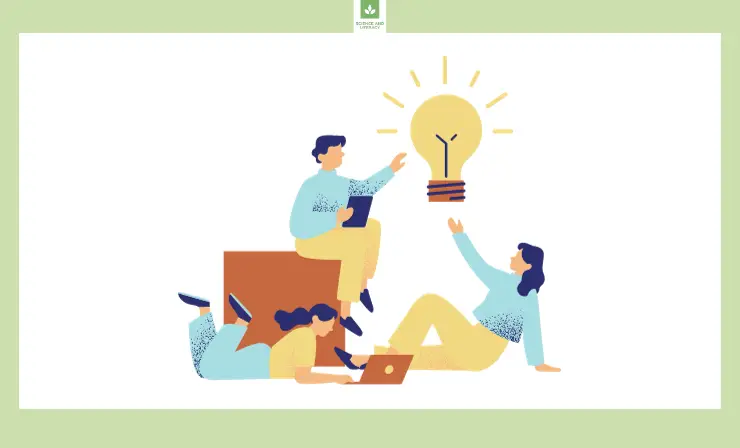
In a world where creativity and innovation stand as pillars of progress, integrating cell phones into the classroom can act as a catalyst to spark these vital qualities in students. Permitting the use of these multifunctional devices within educational settings can usher in an era where boundaries of traditional learning are expanded, fostering a culture of imaginative thinking and inventive problem-solving:
- Unlimited Canvas for Students: Cell phones are no longer just communication tools; they’re compact hubs of unlimited resources and applications. From digital art platforms to music creation apps, coding environments to virtual reality experiences, the scope for exploration and creation is vast. When students are granted the freedom to utilize these tools, they are essentially handed a canvas with unlimited colors.
- Boosting Creativity Through Autonomy: Research indicated that student creativity flourished the most under professors who permitted their pupils to engage in “tasks of their own choosing,” particularly in devising innovative solutions via the development of educational apps. For instance, a literature student might create a visual representation of a poem, or a science enthusiast might design a virtual experiment. Such engagements not only solidify understanding but also encourage students to think outside the box, enhancing their creative prowess.
- Collaborative Innovation: With the collaborative features many apps offer, students can work in groups, brainstorming and building upon each other’s ideas. This collaborative innovation teaches them the essence of teamwork in creation.
In essence, understanding why phones should be allowed in school goes beyond merely embracing technology; it represents an opportunity for students to think differently, challenge norms, and innovate. It’s about nurturing a generation of creators and innovators who are prepared to shape the future.
7 Ideas How Cell Phones Can Be Used Effectively in the Classroom
As we mentioned above, allowing students to use phones in the classroom can greatly benefit your instruction.
There are a number of ways you can use these technological tools to enhance your lessons and provide your students with access to resources they may otherwise not be able to use. Some of the top ways to effectively use cell phones in the classroom include:
1. Scanning QR Codes
Teachers can create QR codes to send students to a specific website where they can find important information. You can also use QR codes to let students self-check their work (multiple QR codes, with the one next to the correct answer directing students to the next question or problem to solve).

2. Using Educational Apps
There is a multitude of educational apps out there designed for students of all ages and all subject areas. Choosing a few of these apps to use to give your students extra practice on a skill or target a specific area of need can be quite beneficial. Take a look at our articles on educational VR apps or vocabulary games.
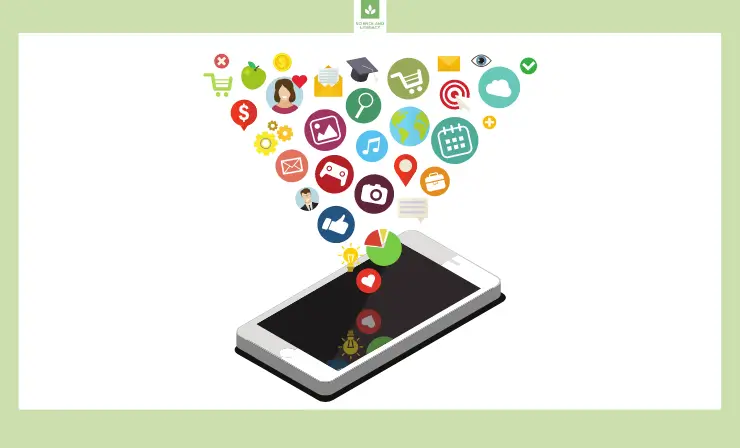
3. Collaborating on Assignment
Students can work together with their classmates using Google Docs and see what the other is typing. This could work with students seated together, as well as with students working separately from one another.

4. Completing Surveys and Quizzes
You can have your students answer polling questions through their phones to assess their understanding of a given topic. These questions may be written as true/false, multiple-choice, or short answers. There are many different programs and websites that can help you with creating quizzes and surveys for your students.
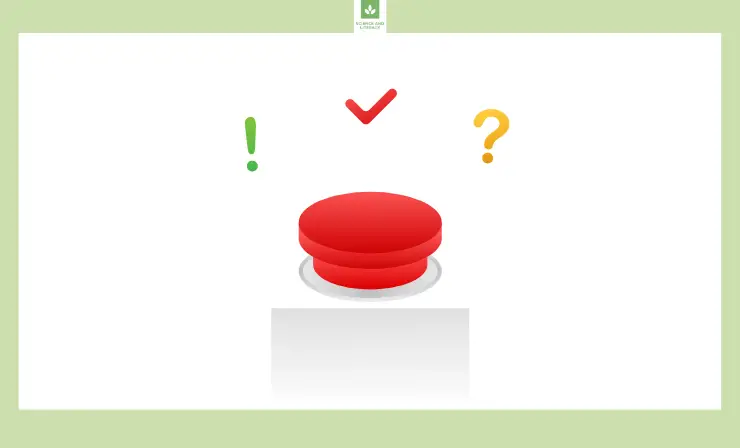
5. Providing Feedback to Others
Students can read other students’ writing assignments or other work and provide them with digital feedback or additional questions to consider.
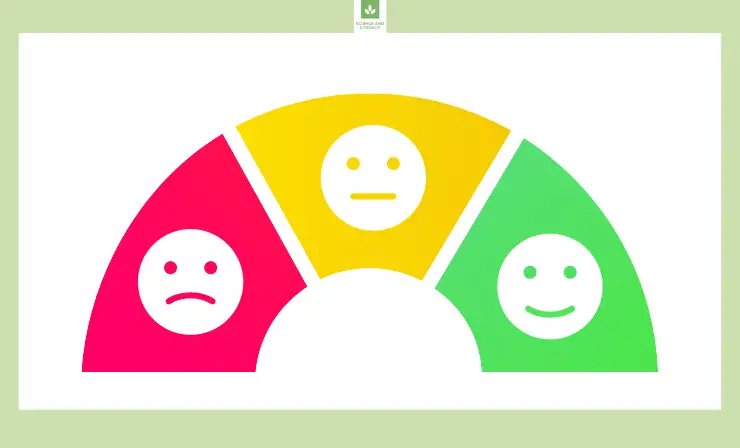
6. Augmented Reality Experiences
Leveraging cell phones, students can access augmented reality (AR) tools, transforming classroom learning. AR overlays digital information onto the real world, allowing students to interact with 3D models, historical recreations, or complex diagrams. This immersive experience deepens understanding, turning abstract concepts into tangible, interactive lessons, and making learning more engaging and memorable.
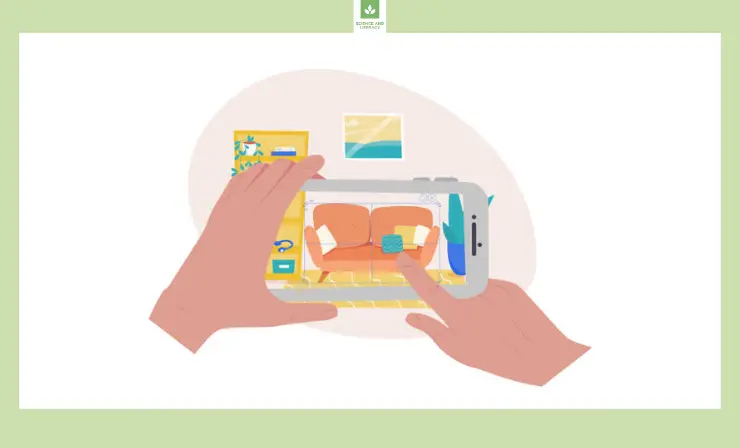
7. Recording and Editing Multimedia Projects
In the classroom, cell phones empower students to create multimedia projects by recording videos, capturing photos, and editing them on the go. This hands-on approach facilitates deeper understanding, promotes creativity, and enhances presentation skills. By producing and refining content, students learn both the subject matter and vital digital literacy skills, preparing them for modern, tech-driven environments.
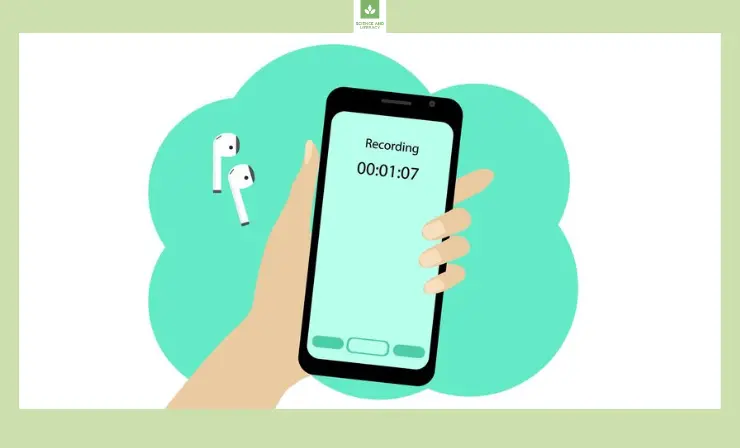
Digital Etiquette for Students in the Classroom
Once your school has settled the debate over whether gadgets should be allowed in school and decided to let students use these valuable technological resources, it is essential to teach proper phone and technology etiquette to your students and develop systems to manage cell phone use in your classroom. Using mobile phones in the classroom properly is key; they should not be a distraction or something that gets in the way of learning.
In this video, CJ Reynolds is talking about tips that he uses to keep kids off their phones without making it a big deal.
Share these rules for digital etiquette with your students to help ensure phones are a beneficial tool, not one that distracts from learning.
- Put your phone down when someone is talking to you and make eye contact with the speaker.
- Don’t text while you are walking.
- Be aware of your surroundings and don’t get distracted from someone or something important.
- Silence your phone when you are in class.
- Remove your headphones if someone is trying to talk to you.
- Don’t post on social media during the school day.
- Be a good digital citizen and avoid getting into any digital drama.
- Know the cell phone policy for each of your teachers, and respect it when in their classroom.
- Don’t make your teacher, classmates, friends, or family secondary to your phone.
Watch more about digital etiquette in this video by Rich Colosi Media.
Additionally, if you’re interested in crafting your own phone policy, please refer to our specialized article on the topic.
Useful Resources
- Cell Phones in School: Let’s Talk about the Pros and Cons
- What is Classroom Management?
- 19 Big and Small Classroom Management Strategies
Final Thoughts
There are some pros and cons to consider regarding using cell phones in the classroom. However, given all the benefits that were shared above, I think the reasons to allow mobile phones in school far outweigh the reasons against allowing them. Allowing students to use their gadgets in the classroom will help keep them engaged in learning and provide them with instant access to technology, tools, and resources to help them learn.
So, now that you know the answer to the question, “why should students be allowed to use cell phones in class,” has your thinking changed? How do you see yourself using mobile phones with your students?
References
- “Number of mobile phone users worldwide from 2015 to 2020”, Statista
- “Share of Americans owning a smartphone in the U.S. as of June 2023, by age”, Statista
- “Should you let your kids have a cellphone in school?”, USA TODAY
- Education Awesomeness
- The Daring English Teacher
- EdTech Endeavours
- A.J. Juliani
- “Should the Cell Phones Be Allowed in Schools”, DebateWise
- “Cell Phones in School: 11 Reasons Why They Should Be Allowed”, StudentTutor
- “What age are kids when parents first buy/give them their own cell phone?”, Statista
- “School Shootings Are Fueling the Debate Over Cellphones in Class”, Education Week
- “Smartphones can improve academic performance, when used appropriately”, phys.org
- “School Communication and the Environment”, Schoolstream
- “Building lifelong learning, with the help of technology”, University of Washington
- “The Importance of Promoting Digital Citizenship for Students”, School of Education
- “Using Smartphone Cameras To Improve Student Organizational Skills”, National Education Association
- “How I use my phone as assistive technology in class”, Perkins
- “Mobile Learning Can Promote Student Creativity When Done Right”, Campus Technology
- “Cell Phones In The Classroom: Learning Tool Or Distraction”, Oxford Learning
- “Should Cell Phones Be Allowed in School?”, School of Education
- Overview of 22 Low-Code Agencies for MVP, Web, or Mobile App Development - October 23, 2024
- Tips to Inspire Your Young Child to Pursue a Career in Nursing - July 24, 2024
- How Parents Can Advocate for Their Children’s Journey into Forensic Nursing - July 24, 2024

My principal seems to have an old-school thought process about cell phones in school and has completely banned them from being out in the classroom. I’d like to let my students use them for instructional purposes. Any tips on how to change her thinking?
That is tough. I’d start by finding some other teachers in your building that share your opinion and come up with a plan to present to your principal together. Bringing data, like what I shared in the article, about how cell phones can benefit students in class could help you make your point.
I love the artice and am using it for an assingment if you see it your name or website will be on it.
Thanks for the article it is truly an elaborate article, thanks for sharing it.
yes, this is fab
my teacher does not allow phones
my whole state banned phones in class TvT
I feel like you should be able to use your phone at passing periods and breaks and also lunch.
i agree
amazing
this is a common question people ask me I 57 year old male once allowed my kids to have phones in class but one pranked called the police so I say no
This is a nice source for my citation C: Thank you.
I am writing a speech to present to my class to persuade the teachers to allow more phone usage in class, thank you for your point of view and the information.
You’re welcome!
thanks so much! this will help a lot with a project I’m doing
I am making a debate speech this is really helpful thank you!
You’re welcome!
I was not born with this new technology, cell phone, I had to learn it. Now, I am a teacher and honestly, it is great as a tool for students to use but it’s also a deterrent. Like my wife says, “You give a mouse a cookie and they will ask you for a glass of milk”. Students seem to confuse rights with privilege. My students honestly believe that they have the right to use a phone whenever they want, this includes during a class, versus asking permission. Unfortunately, others do not use it appropriately. I have no problems with the use of cell phones, as long as it is for academic achievement, but not as a school alternative (ignore teacher and ignore daily task).
Thank you for sharing your thoughts with us! We completely agree about the inappropriate use of phones.
thank you! so much i don’t know what i would do without this information!
You’re welcome!
Thank you for this essay
The essay has good information but I want more. You are telling me about the technology benefits but that’s what the Chromebooks are for. So if you could give me a stronger argument I would definitely agree.
Thanks for letting us know. We will take your wishes into consideration
All nonsense!
Phones are by far the biggest distraction for teachers to deal with. You can’t compete with the entertainment value of their phone and when you have them out it away…they are still thinking about how to get around the rule. TOTAL BAN is the only way!!!
Students can not handle these devices!!!!
Thank you for sharing your opinion.
I still believe there are many ways to get students’ attention in the classroom rather than on the phone.
I always enjoy the creative ways technology can be used in schools. The mix of video talks, blog ideas and teacher input this post are great ways to share ideas. Thanks for the modern takes on how to use phones in the classroom, it is refreshing!
My pleasure!
I NEED THIS FOR MY ESSAY. THANK YOU!
I believe that cell phones in schools should be friends not enemys
thank you so much
We need our phones for SAFETY ?
This was very cool and so many good reasons why we should be able to use our phones in class!
This was very helpful imformation
I appreciate this article it is so supportive and believes in this article thanks ✌
❤
four big guys is crazy lol four big guys and they grab on my thighs
TRUE
i agree they should allow phones in school but just when were are really stuck or bored. so that is why i think that.
Hey! Thank you! I needed this for my ELA class argumentative writing prompt, this information was very useful. Since my school has a no phone-in-class rule, I can’t even have it with me in my bag! The only time I have on it during weekdays is at home and on the bus. But anyways this information was essential for my project. Thank you! 😀
You’re welcome!?
This is so helpful for argumentative essays! Thank you!
Thay can be good use for kids that walk home from school or to school or both.
In many school districts, the students borrow laptops, so they don’t need cell phones. Teachers may use software to restrict the laptops to their selected educational websites. Cell phones have disrupted learning, so they must be banned or jammed in the classroom. However, when students aren’t distracted by cell phones, they will gradually become worse at running around, yelling, and fighting, like they did before their cell phone addictions. We need consistent discipline. Disruptive students should learn with fun programs on a computer in separate rooms, instead of infecting other students with bad attitudes. After a year of learning on a computer, they can try the classroom again. We also need online video in the classrooms, so everyone, especially parents, can see the discipline problems in schools. When white schools have strict discipline and cell phone bans, but minority schools don’t, which students will get the high-paying better jobs? This is racism.
I agree with this as a student! But unfurtently my school is very old school so they banned cellphones.
Thank you for this helped me with a essay im doing for school. 🙂
i agree so much?
thank you for the info cause i have been having trouble finding an article like that and i found one so thank you!?
I forgot to put that i’m having a debate about using cell phones in class.
❤
Im a current high school student and honestly what I’ve seen is the exact opposite of this. first period English is just a majority of people being on their phones. Unless a teacher is very strict about phones usually nothing is done about it. Honestly my parents disallowing me to bring my phone to school is what changed my grades for the better for the rest of the school year up until now. Also, some students might argue for these points but it’s usually only used as a scapegoat to make the excuse of “Oh but this article says it’s good to use phones!” Still, I’ve seen phones do so much more negatives than positives as well as the points listed here barely ever being utilized.
Yes i think they should allow it for many reasons
Coming in from Parker Middle School so I am doing a essay on why we should be able to have phones in schools and even class rooms and I was wondering if you could have your word to support having cell phones in school.
phones are what brought you into this world
be thankful
I love the way you used cell phones in the classroom. Me personally-I use mine for extracurriculars.
As a High School teacher, I pretty much dislike the use of cellphones. If used for emergency, yes that’s a legitimate argument and in such case, cell phones need to be accessible to students in case of an emergency. However that would be the only reason cellphones should be allowed in classrooms. I studied high school without a cellphone and I was able to be engaged, organized and learned by using other technologies. This article doesn’t mention the pros and cons of allowing cellphones in classrooms and does not consider if the benefits weigh more than the disadvantages.
Thank you this website is amazing hope I get an A+ for my argumentative essay. Wish Me Luck!
Thanks I will use this for my topic
As a teacher at my school, I can say the cell phones are 99% more a distraction than ever as a learning tool. All the kids on the phones during class is to play video games. and look at non educational sites so that’s why cell phones are banned in my classrooms. I would say if the kids understood accountability and are responsible, then it’s a different discussion.
i can use this for my project . Almost all my classmates try to sneak there phone in class . But they always get in trouble . They don’t need a phone becuase it is can make you fail class and other things that is a proably
Very valid points. I am using you as a source for my essay. Thank you.
Thanks this helped me with my Delve Project
Hi, my name is Eli and I am an 8th grader at Indianola Middle School in Iowa. I am doing a research project about a topic of my choice and I chose to research Should phones be allowed in class. I think you would be a great person to give me more information about this topic because you gave great points and reasons why phones should be allowed in school classrooms.
Thank you so much for this article, Love your work!!!